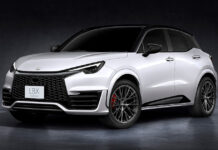
+++ Technology transfer enhances mobility partnership between the BMW
Group and DSV Biathlon +++ German’s male biathletes test in the wind
tunnel for the first time +++ Valuable findings with regard to stance
and aiming process +++ Reference points for further optimisations and
innovations +++
Munich. Since last autumn, the BMW Group has been
“Mobility Partner of the German National Biathlon Team” and has
provided the team with electrified vehicles. Within this partnership,
BMW has allowed the DSV biathlon squad to perform tests in a wind
tunnel for the first time. In the different wind speeds and directions
generated in the controlled laboratory conditions in the BMW Group’s
Aerolab, the DSV men were able to analyse their body posture, their
reactions to different conditions, and the movement of their weapons
when shooting whilst standing.
Here, where the NEUE KLASSE of BMW cars are usually put through their
paces and optimised aerodynamically, it was now the German biathletes
who for two days had the opportunity to examine their stance and
aiming process in the wind. With the athletes too, it was all about
identifying potential for improvement, as biathlon races are often
decided at the shooting range.
“The BMW Group wind tunnel is our main test centre, as far as
aerodynamics are concerned. Here, we are able to determine the
proportions and finer details of the vehicle, making it as efficient
as possible and thus increasing electrical range,” says Holger Gau,
Head of Dynamics Mid-Range BMW. “With the biathletes, we analysed the
sensitivity of the shooting with a side wind. As we are able to
generate consistent conditions in the wind tunnel, the athletes were
able to adopt different postures, which could then be analysed and compared.”
Pressure points and pressure distribution were measured using sensors
on the soles of the biathlon shoes. A measuring device was mounted on
the barrel of the gun, which recorded the aiming and shooting process.
The athletes were also observed in the wind tunnel by cameras and
trainers. Last but not least, the analysis also incorporated the
subjective feelings of the biathletes.
“We have just one challenge – and that is to be as successful as
possible in competition. However, to master this challenge you have to
do something in an awful lot of areas. You have to be progressive, if
you want to break into the world elite,” says Uroš Velepec, coach of
the DSV German men’s biathlon squad. “As such, it is very valuable to
be given the opportunity to test in a wind tunnel for the first time.
Together with the aerodynamics experts in the BMW Group, we have
developed some really significant tests. The results are already
promising. We are very grateful to BMW and I hope this partnership
will continue to develop on a technological level.”
As well as the individual analysis of the standing position in the
wind, and the compensatory movements, Velepec also took another
approach: without naming names, he is convinced that there are
athletes in the German men’s squad who are among the best in the world
when shooting in the wind. The goal now was to find out how these
athletes act intuitively and to use that to develop a model, which
could be applied to others. “We can now see what these athletes are
doing differently,” said Velepec after the wind tunnel tests. “We
always suspected it, but we now have proof and know how they do it.”
Karlheinz Waibel, DSV National Science and Technology Coach, is also
impressed by the two days in the wind tunnel and the cooperation with
the BMW Group engineers. He says: “We planned the tests together with
the BMW experts and wanted to know how they would approach them. We
were asked questions, which we were unable to answer, because we did
not have any knowledge from the past. That is how we came up with
exciting and clever ideas, which we will continue to pursue – with
regard to aerodynamic improvements to the gun, for example.”
It will take a few more weeks to evaluate and analyse the data
acquired, but one thing is already certain: the German national
biathlon team’s first trip to the BMW Group’s Aerolab will not be the last.







![[Presentation] Livestream of TMC’s Press Conference](https://www.miamicars.com/wp-content/uploads/2023/02/tmb_corporate-218x150.png)







